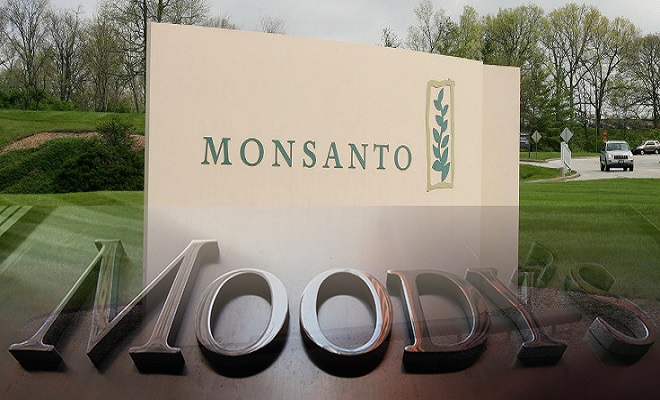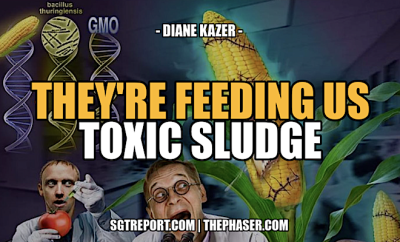 Natural Society
Natural Society
GMO
THE GMO SCRAPBOOK: DOES THAT PIZZA COME WITH GMO-FREE MARINARA SAUCE?
by Joseph P Farrell, Giza Death Star:
Ms. M.W. shared this article with me, and I have to pass it along because like many readers here, I’m concerned about the GMO issue. As anyone who knows me well, I love pizza, and fortunately, I live in a place where there are good “ma-and-pa” pizzarias that are not part of the big national pizza chains. And, as anyone who knows me well will also tell you, I do not eat at most big “fast food” chains, certainly not McDonald’s or Carl’s Jr. or Burger King or what have you. My reason is simple: I like meat in my hamburgers, not a lot of monosodium glutimate and soy. And frankly, if McDonald’s or whoever else sold buffalo(bison) burgers, I’d pay the extra cost just to avoid the hormone-and-ammonia-laden ground “beef” of the American meat processing industry. When I buy groceries, I avoid the big chains, and go to a local organic grocery store for my vegetables and buy ground bison rather than ground beef. The “beefy” taste is almost the same, and when cooking it, it smells “cleaner” and better since one is not also cooking a bunch of ammonia and steroids (don’t believe me? try it some time if you’re in a place that sells ground bison). If I could order a pizza from Dominos with GMO-free marinara sauce, I would.
And, it seems, I’m not alone:
The End-Game for GMOs? Are Monsanto’s Worst Fears Coming True?
As noted, I seem to be joined by the Chipotle Mexican food chain:
“The decision of the Chipotle restaurant chain to make its product lines GMO-free is not most people’s idea of a world-historic event. Especially since Chipotle, by US standards, is not a huge operation. A clear sign that the move is significant, however, is that Chipotle’s decision was met with a tidal-wave of establishment media abuse. Chipotle has been called irresponsible, anti-science, irrational, and much more by the Washington Post, Time Magazine, the Chicago Tribune, the LA Times, and many others. A business deciding to give consumers what they want was surely never so contentious.
“The media lynching of Chipotle has an explanation that is important to the future of GMOs. The cause of it is that there has long been an incipient crack in the solid public front that the food industry has presented on the GMO issue. The crack originates from the fact that while agribusiness sees GMOs as central to their business future, the brand-oriented and customer-sensitive ends of the food supply chain do not.”
The problem, as noted above, is that anti-GMO stances are viewed as “anti-science”, a charge that is laughable for anyone who knows the history of “scientific” testing of GMOs: not for nothing have counties such as Russia pointed out the lack of long-term intergenerational testing not only of GMOs but their environmental impact. More recently, as recent studies have also shown, the long-term cost-benefit ratios of GMO fields decline as pesticide use increases while yields decrease against their non-GMO counterparts. To any rational mind, such studies would seem to indicate that the whole GMO enterprise is simply a failure from both a scientific and business sense, for human genetic engineers cannot adapt as fast as mother nature herself:
The other factor in all this turmoil is that the GMO technology wheel has not stopped turning. New GMO products are coming on stream that will likely make crop biotechnology even less popular than it is now. This will further ramp up the pressure on brands and stores to go GMO-free. There are several contributory factors.
The first issue follows from the recent US approvals of GMO crops resistant to the herbicides 2,4-D and Dicamba. These traits are billed as replacements for Roundup-resistant traits whose effectiveness has declined due to the spread of weeds resistant to Roundup (Glyphosate).
The causes of the problem, however, lie in the technology itself. The introduction of Roundup-resistant traits in corn and soybeans led to increasing Roundup use by farmers (Benbrook 2012). Increasing Roundup use led to weed resistance, which led to further Roundup use, as farmers increased applications and dosages. This translated into escalated ecological damage and increasing residue levels in food. Roundup is now found in GMO soybeans intended for food use at levels that even Monsanto used to call “extreme” (Bøhn et al. 2014).
Simply put: as pests adapt and become “Roundup resistant”, new pesticides, and therefore new herbicide resistant strains of GMOs, have to be engineered.
But the market has now entered the picture, and this is always the biggest danger to corporations with grandiose cartel ideas like IG Farbensanto, DuPonzanto, BASF (Biosynthetic Assinine Synthetic Footstuffs), and Syncrudda: people simply do not like to ingest poison, once they know it’s poison, whether it comes in a hamburger, a tamale, a pizza, or, yes, a vaccine. These corporations achieved their prominence through mercantilist policies and government favoritism. But if the movement for GMO-free food continues to grow, they will simply have to start selling non-GMO seeds, or lose further market. And if other nations begin to regulate and demand that American food chains operating in their borders have non-GMO products, then the game is over.
For the present however, the GMO geopolitics and politics is not over. So, if they’re in my area, Chipotle can be expecting a visit from me…
See you on the flip side…

















